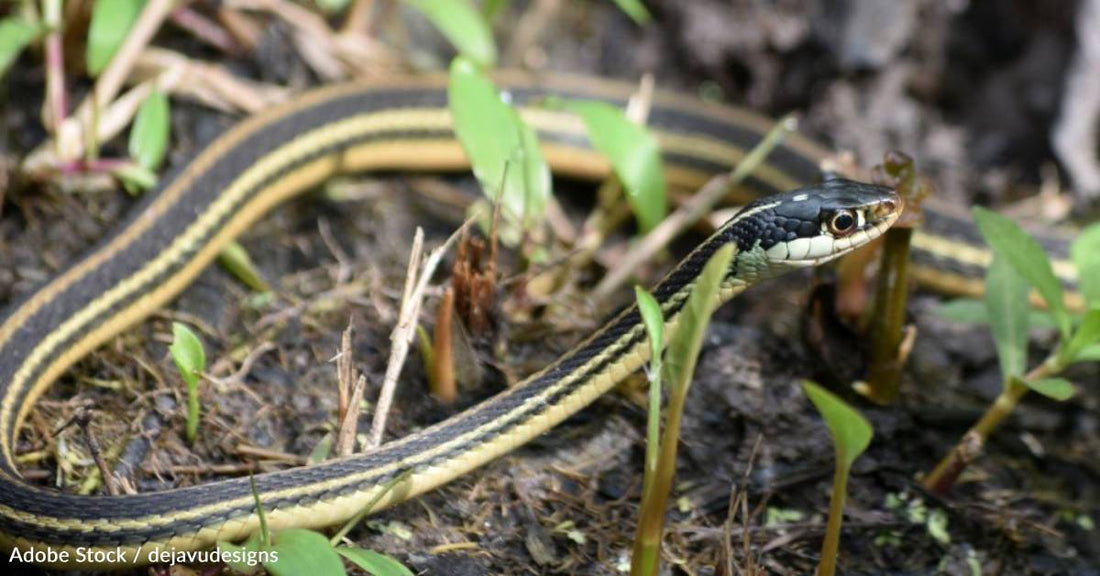7th Annual Holiday Toy & Book Event Help make the holidays brighter this year!
10 Facts About the Often Feared, But Mostly Harmless, Snake
Michelle Milliken
When people think of snakes, it may not always be in the most positive way. There may be fear over the deadlier species, or maybe they just agree with Indiana Jones. These animals play a key role in the environment, though, and they're interesting critters! Learn more about them on this World Snake Day!
They’re Beneficial
Snakes play a big role in the environment as both predator and prey. They eat pests like rodents, which can carry zoonotic diseases, and serve as food for raptors, including owls. Another animal that eats them? Opossums, which are able to eat poisonous snakes because they’re resistant to much of their venom.
Their venom may actually save lives, too. There has been a variety of medical research done on it, including studies on the venom of the pygmy rattlesnake, which has helped develop a drug that can thin the blood of people having heart attacks.
They’re Found Almost Everywhere
Snakes can live in a variety of habitats, ranging from forests and swamps to grasslands and water. In fact, there are only a few places they’re not found: Antarctica, Greenland, Iceland, Ireland, and New Zealand.
Most Are Harmless
With more than 3,000 snake species found across almost the entire world, if you encounter one, it’s most likely harmless. Only about 600 species are venomous, with only 200 of those able to cause much harm to humans. Non-venomous snakes include the milk snake, the python, the bullsnake, and the garter snake.
Some of Them Hibernate
Speaking of garter snakes, they’re among the species of snake that hibernate in the colder months. Well, technically, they brumate, which is essentially the cold-blooded animal’s version of hibernation. Garter snakes will overwinter in large groups – sometimes up to hundreds of snakes - to keep their temperatures up. They may do so in natural cavities or burrows, but they’ll still pop out to bask on rocks on warmer days.
They Can Eat Things Much Larger Than Their Jaws
You’ve probably seen videos of snakes chowing down on something much bigger than their mouths. Pythons, for example, can eat alligators, deer, antelope, and even, on very rare occasions, people.
Snakes can do this because their lower jaw is connected by a ligament that allows them to open their mouths wide and move their jaws independently. Once the prey is in a snake's mouth, it “walks” over the food in a side by side, forward movement.
They Can Fast for a While
We might get a little cranky when our dinner is overdue, but snakes don’t really have that problem. They can go long stretches between meals. Rattlesnakes, for example, can do with eating about every two weeks, depending on how big their last prey item was. Some species, though, may only eat eight to 10 times per year.
They Smell with the Help of Their Tongues
When snakes need to get a whiff of something, they do so in a unique way. The animals gather scent particles with their tongues. They then pull them back into their mouths and insert them into two holes in the roof of their mouths called the Jacobson’s organ, which then helps the brain interpret the scent.
All Snakes Can Swim
We pretty much all enjoy a day at the lake... apparently even snakes. All snake species can swim. They may have different styles of getting through the water, though, most choosing to be either below the surface or partially submerged.
One Snake Likes to Mimic its Rattling Cousin
It’s always fun to watch someone do a good impression, and one snake species is just as good as any late night TV act you may see. Bullsnakes can imitate rattlesnakes. They already look very similar, but the bullsnake takes it up a notch by shaking its tail quickly to resemble a rattle, all while making a hissing noise that sounds remarkably like their more dangerous cousin’s hardware.
They Face Many Threats
Snakes face threats that many other species do: habitat loss and degradation, diseases, and parasites. They’re also often hit by cars, sometimes intentionally due to humans’ negative view of them. Rattlesnakes are especially prone to human persecution, as people see them as dangerous pests. Bullsnakes often experience this, too, due to being confused for the rattler, with their similarities and mimicry.
Would you like to do your part to help injured or rescued reptiles, who may have been harmed by a human? Learn one way you can do so here!






